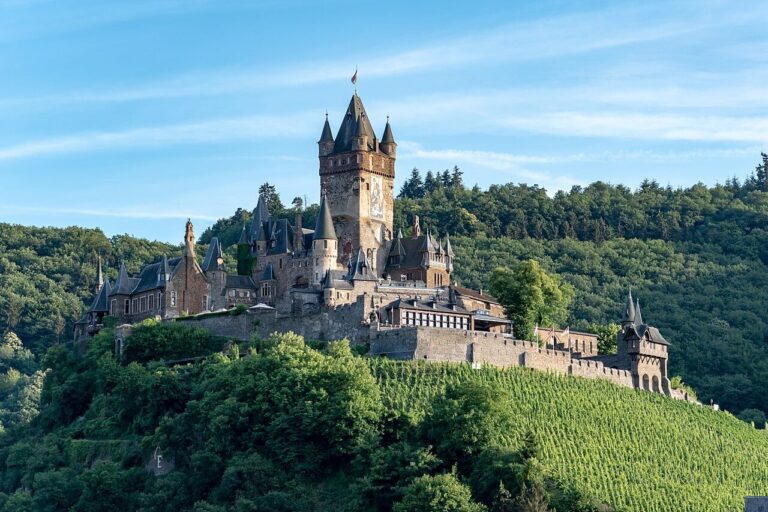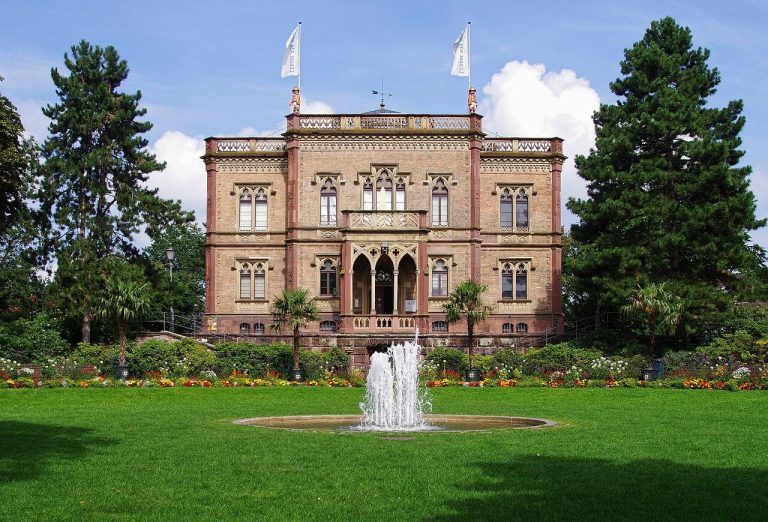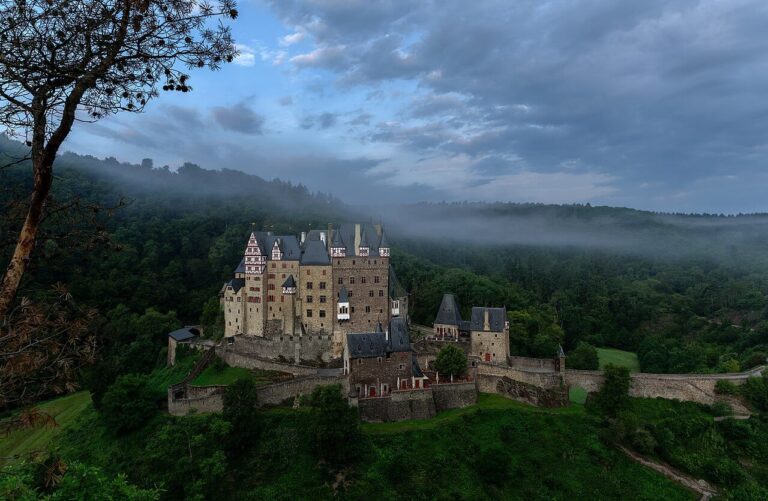The 16 Most Beautiful Castles in Bavaria
If you want to visit the most famous German castles, then you should travel to Bavaria. Bavaria is the largest state in the country and is located in Southern Germany. Bavaria is historically a wealthy and important area and it will come as no surprise that you will find hundreds of castles in this area. These German castles each have a unique history and these beautiful castles are among the most popular castles in Germany (and perhaps even the world).
You will find a large range of castles in Bayern, from castles that date back to the middle ages to Royal castles. Each one of these historic Bavarian castles is worth visiting and most can easily be visited on a day trip from Munich.
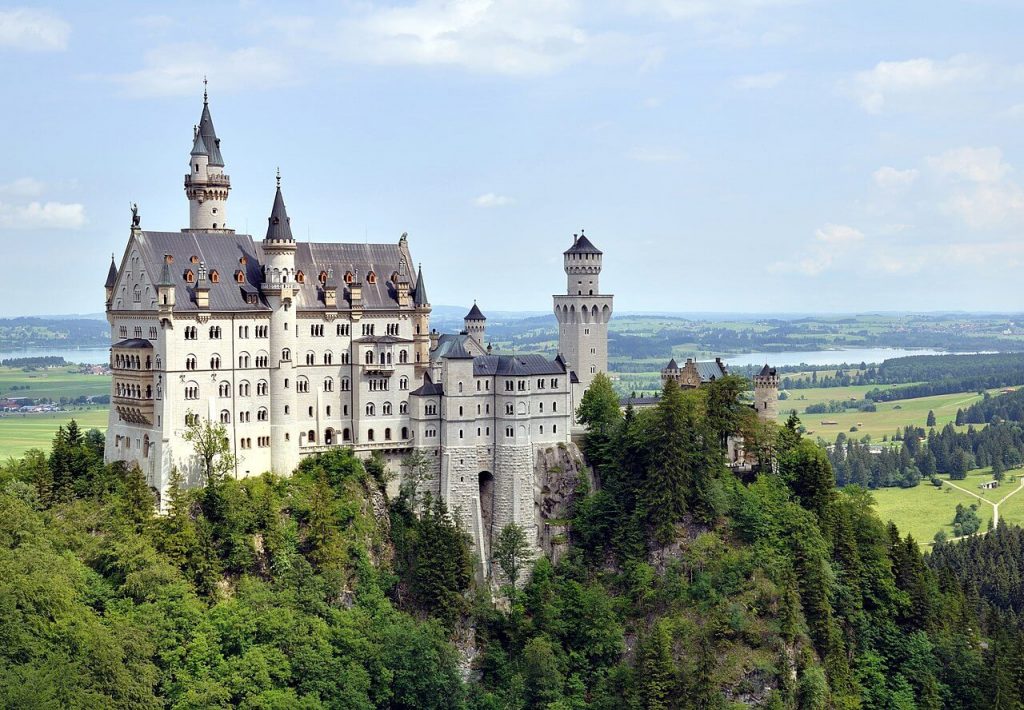
Neuschwanstein Castle
The most famous castle of Bavaria is without doubt Schloss Neuschwanstein. Neuschwanstein is also known as the Disney Castle as this is the castle that inspired Walt Disney for his fairytale castle in Sleeping Beauty.
The castle was built in the 19th century by King Ludwig II of Bavaria as his private refuge. Wartburg Castle, a Medieval Castle near Eisenach, was Ludwig II’s biggest inspiration for the built of Neuschwanstein. You can visit more than a dozen rooms in the private apartment and state rooms.
Neuschwanstein Castle visitor information: the castle is open daily. Visit the website for more information.
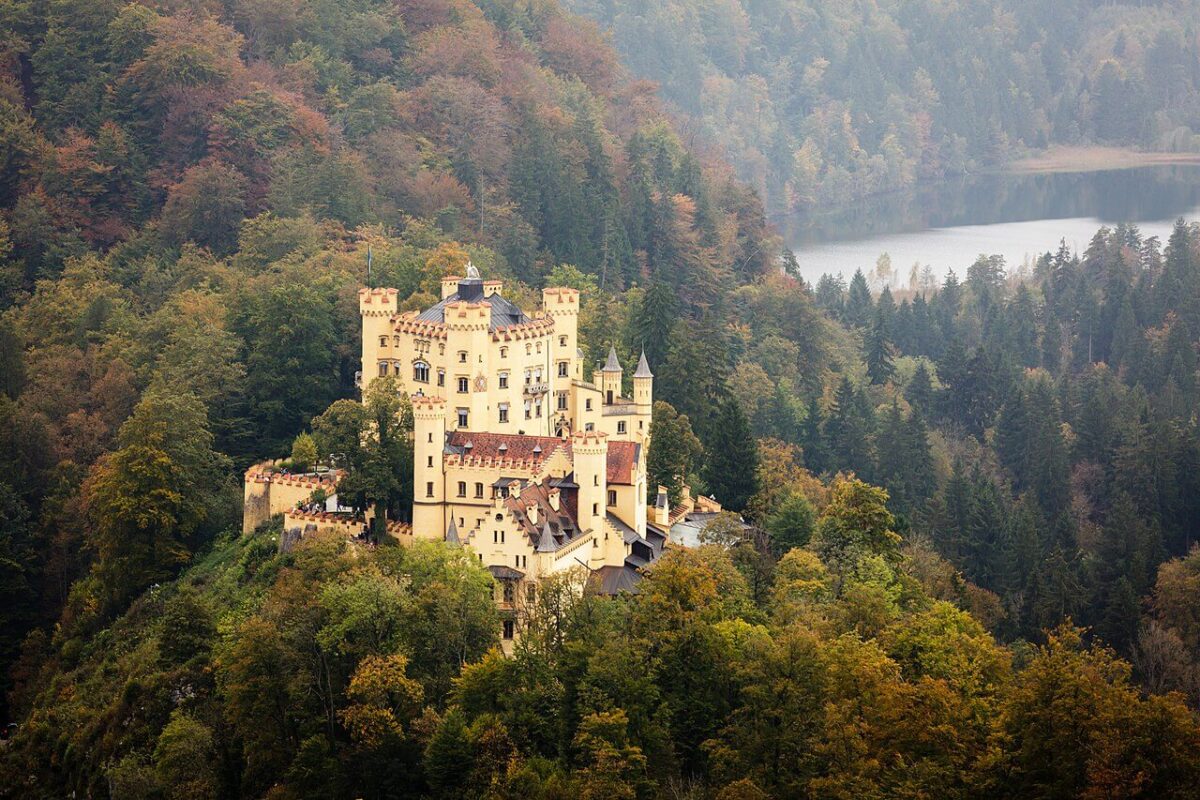
Hohenschwangau Castle
Schloss Hohenschwangau is an 18th century castle built by King Maximilian II overlooking the Hohenschwangau valley. Hohenschwangau means “The High District of the Swan” and was the summer and hunting palace of the Bavarian Royal family. It was also the childhood home of Ludwig II. Hohenschwangau Castle and Neuschwanstein Castle are located close together, so you can visit two castles during one trip.
Hohenschwangau Castle visitor information: The castle is open daily and you can tour the castle though guided tour. You can visit the website for more information.
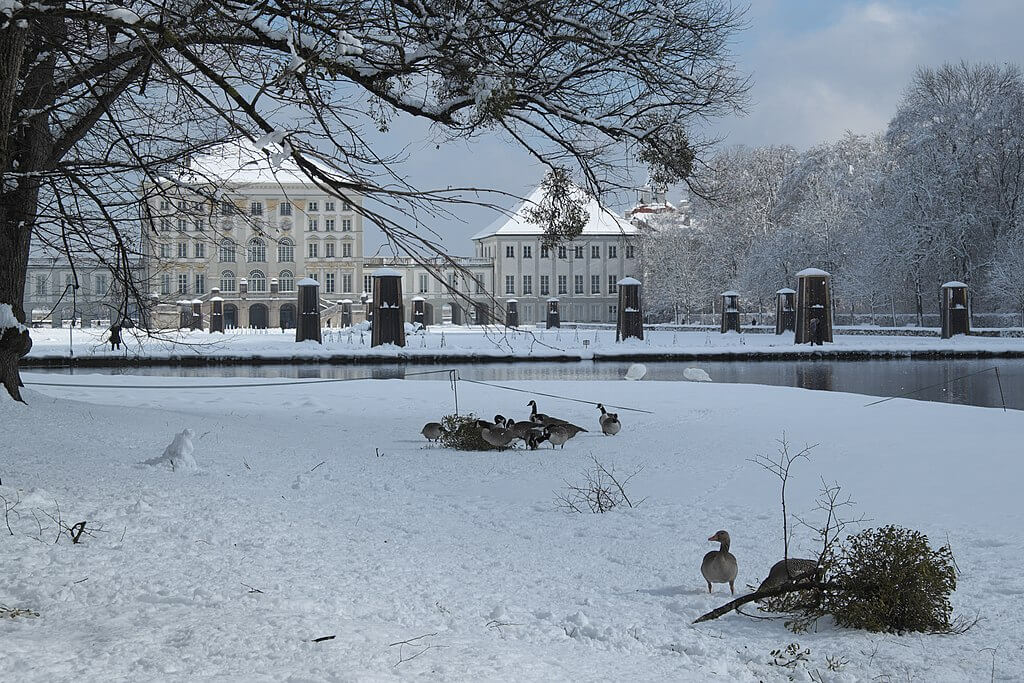
Nymphenburg Palace
Schloss Nymphenburg is a Baroque palace that was built between 1664 and 1675 for Elector Ferdinand Maria and Henriette Adelaide of Savoy. The palace was originally built as a summer residence and later became the hunting lodge of the court. Though the palace is open to visitors it is also the residence of the Duke of Bavaria.
Nymphenburg Palace and Park visitor information: the palace and park are open daily. There are audio guides in German, English Italian, French, Spanish, Russian, Chinese, and Japanese.
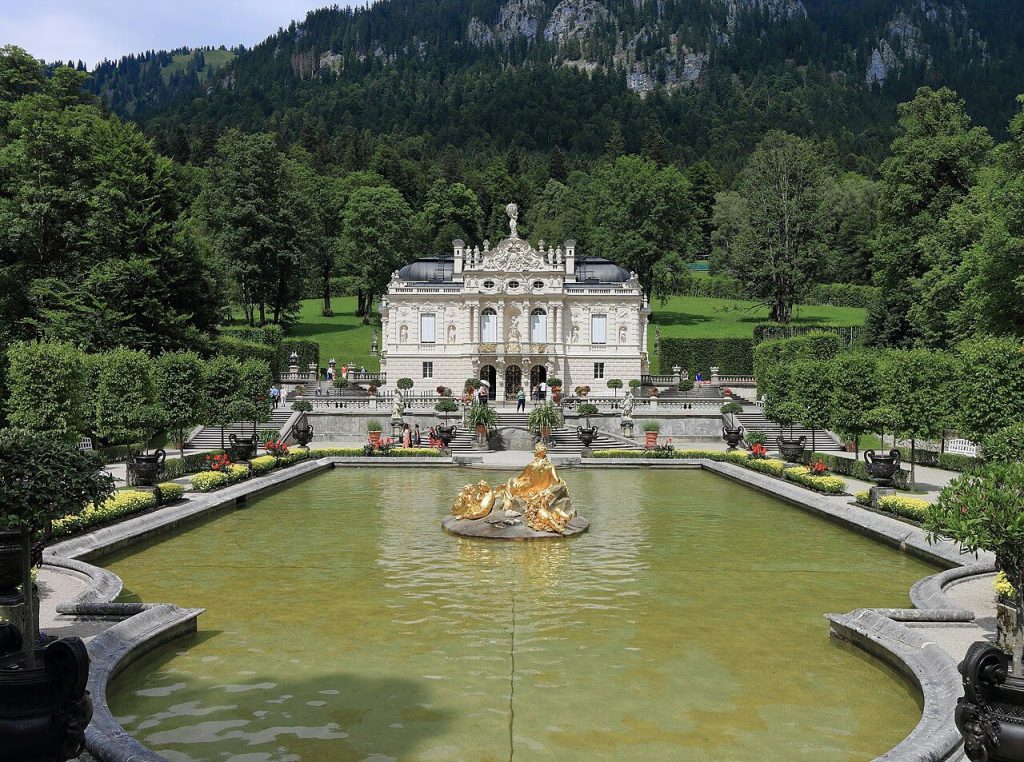
Linderhof Palace
Schloss Linderhof is the smallest of the three palaces built by King Ludwig II. The Rococo palace is inspired by Versailles and includes a staircase that looks similar to the Ambassador’s Staircase in Versailles. The gardens are designed in Renaissance, Baroque, and English garden styles.
Linderhof Palace visitor information: the palace is open daily. Visit the website for more information.

Herrenchiemsee Palace
Herrenchiesmee Castle is another palace in Germany modeled after Versailles. King Ludwig II built Herrenchiemsee as a “Temple of Fame” for King Louis XIV of France. The Neo Baroque palace has a Hall of Mirrors, just like Versailles, with 25 frescoes showing King Louis XIV of France. You can visit the State Rooms but also the French Rococo private apartment of the king.
Herrrenchiemsee Palace visitor information: the palace is open daily. Visit the website for more information.

Burghausen Castle
With a length of more than 1.000 meters (3280 ft), Burghausen Castle is the longest castle in the world. The Medieval Castle was the second “family” residence of the Wittelbach family from 1255 to 1503. After that, it became an important military fortification. Most of these medieval fortifications are still intact.
Burghausen Castle visitor information: the castle is open daily. Visit the website for more information.
Nuremberg Castle
Nuremberg Castle is one the finest Medieval fortress in Europe. Thanks to its strategic high location in the city of Nuremberg, the Castle has played an important role in history. First in the Holy Roman Empire and later as part of the Bavarian Kingdom.
Nuremberg Castle visitor information: the castle is open daily. Visit the website for more information

Coburg Fortress
The Veste Coburg is one of the best-preserved fortresses in Germany dating back to the middle ages. The castle was built in the early Medieval period and thanks to its strategic location it was enlarged and became one of the largest castle complexes in Germany. The most famous guest of Coburg Fortress was reformer Luther. In 1530, during the Diet of Augsburg, he worked on his translation of the Bible at the castle.
The Renaissance and neo-Gothic castle now houses the art collections of Coburg Castle, which were mainly acquired by the Coburg Dukes.
Coburg Fortress visitor information: the fortress is open daily April-November and Tuesday-Sunday in the remaining months. Visit the website for more information.
See also: 22 Spectacular Castles near Munich

Harburg Castle
Burg Harburg is a medieval castle complex that was built in the 11th / 12th century. Unique about this castle is that it features buildings from many periods. On the grounds you’ll see buildings from the Romanesque, Gothic, Renaissance and Baroque periods.
Harburg Castle visitor information: the castle is open daily from March to November. Visit the website for more information.
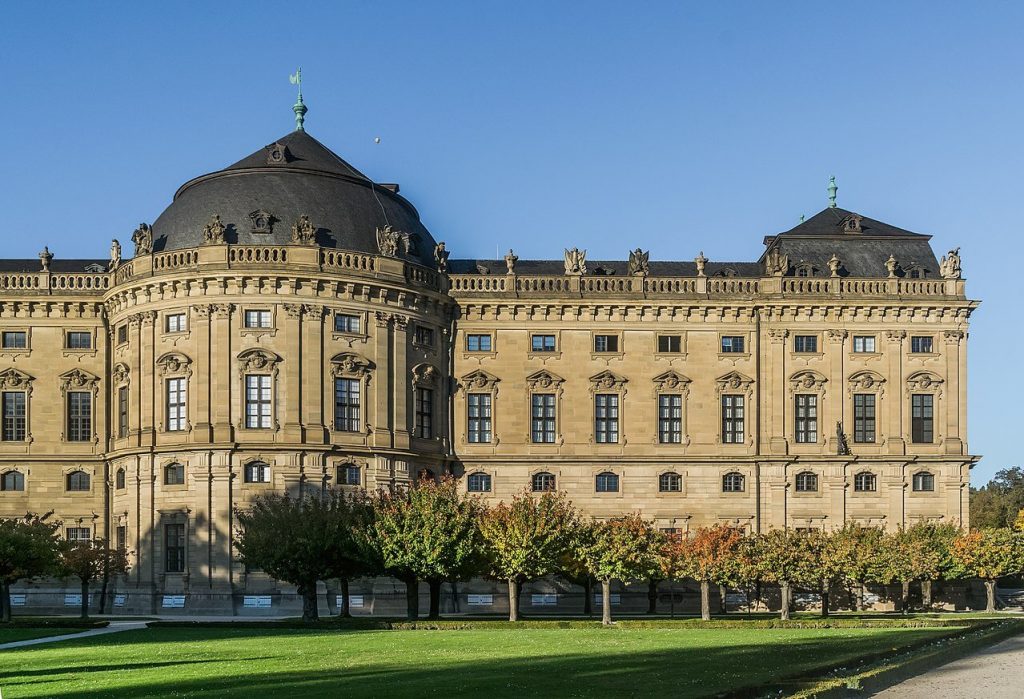
Würzburger Residenz
Because the architect was inspired by architecture from all over Europe, you can see several architecture styles at the Würzburger Residenz, for example French château style and Viennese baroque. The palace is a UNESCO World Heritage Site, during your tour you can see 40 period rooms, frescoes by Italian painter Tiepolo, and the largest ceiling fresco in the world.
Würzburger Residenz visitor information: the palace is open daily. Visit the website for more information.

Schleißheim Palace
In the Baroque park of Schleißheim Palace stand three palaces: Old Schleißheim Palace, New Schleißheim Palace, and Lustheim Palace.
Old Schleißheim Palace is an Italian-style palace built in 1617 by Maximilian I. The palace was mostly destroyed in the Second World War, and later rebuilt, but some original features have been preserved. The palace is the museum of religious folk art (the Gertrud Weinhold Collection).
New Schleißheim Palace is a palace built by Elector Max Emanual in 1700. The palace was meant to be bigger but a poor financial situation meant that a simplified palace was built. Despite this, the palace has a splendid interior including a Baroque staircase hall. The palace houses the State Gallery of European Baroque Art.
Lustheim Palace is an Italian style palace that stands on a circular island surrounded by Baroque gardens. The palace now houses the Collection of Meissen Porcelain.
Schleißheim Palace visitor information: the palaces are open April-September: 9 am-6 pm; October-March: 10 am-4 pm (closed Mondays, with a few exceptions). Visit the website for more information.
Neuburg Castle
Schloss Neuburg is from origin a medieval castle in Neuburg, Upper Bavaria. The castle was redesigned into a Renaissance palace by Count Palatine Otto Henry. The palace includes a chapel, which is the oldest newly built protestant church in the world. In, 1665a Baroque style wing was added to the palace. Today, the palace houses a gallery of Baroque paintings.

Schönau Castle
Wasserschloss Schönau is a moated castle in Bavaria. In the 20th century the medieval castle was remodeled into a villa in the historicist castle style. Therefor the castle is now in a combination of Neo Gothic and Neo Renaissance style. The English Garden in Munich was the inspiration for the garden surrounding the castle. It was designed by Carl von Effner and is now open to visitors.

Castle Callenberg
Schloss Callenberg is a Gothic Revival castle owned by the House of Saxe Coburg and Gotha. The castle has been used as a hunting lodge and summer residence. But it has also been the principeal residence of the noble German family. It now displays the ducal art and furniture collection. And it is the home of the German Rifle Museum.
Castle Callenberg visitor information: the castle is open from Thursday to Sunday. Visit the website for more information.

Seehof Palace
Schloss Seehof is an early Baroque-style palace in Bamberg. The palace was built in 1684 as a summer residence and hunting lodge for the Prince bishop of Bamberg. The interiors are in a combination of Baroque and Rococo style.
Schloss Seehof visitor information: the palace is open April-October; Tuesday-Sunday.

Schloss Johannisburg
Schloss Johannisburg is a symmetrical Renaissance palace in by the River Main in Aschaffenburg. The palace was built in 1605 for the Prince Bishop of Mainz as his second residence. It was also used as the summer residence of Ludwig I who also constructed the Roman Villa “Pompejanum” on the estate. In the 18th century the interiors were redesigned in Neoclassical style.
On a tour of the palace you can visit an art gallery with workd by Lucas Cranach the Elder, the Palace Church with Renaissance altar, the Princely Apartment with Neoclassical furnishings, and the Municipal Palace Museum.
Schloss Johannisburg visitor information: The palace is open Tuesday-Sunday. Visit the website for more information.

